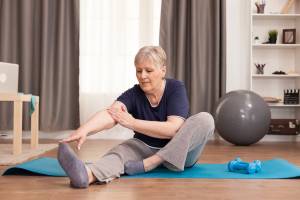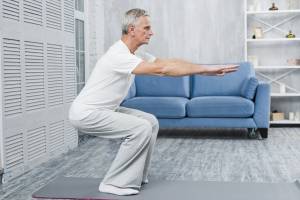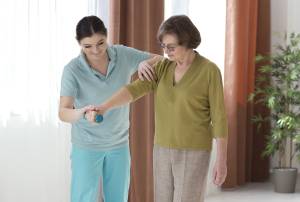Understanding Stroke and Its Impact on Recovery
A stroke, often called a “brain attack,” happens when blood flow to part of the brain is blocked or reduced, cutting off oxygen and nutrients. Brain cells begin dying within minutes, making quick treatment vital. Strokes can cause serious damage, affecting movement, speech, and thinking. Knowing the seriousness of stroke helps highlight why effective recovery is so important.
Recovery after a stroke is complex and depends on factors like how severe the stroke was, which brain areas were affected, and how quickly treatment started. Each person’s recovery is unique, so rehabilitation must be personalized often involving a structured rehab program. Understanding these factors helps set realistic goals and create a supportive environment.
Rehabilitation usually involves several therapies, with exercise therapy playing a key role. Learning about how stroke affects recovery can deepen appreciation for how exercise helps regain function and improve quality of life.
Neurological Benefits of Regular Exercise

Regular exercise provides significant neurological benefits, especially for stroke survivors. Consistent physical therapy and activity enhances brain plasticity, helping restore motor functions and cognitive abilities. This adaptability allows the brain to compensate for damaged areas by forming new pathways, improving movement and coordination.
Exercise also stimulates the production of brain-derived neurotrophic factor (BDNF), a protein that supports neuron survival and promotes the growth of new neurons and synapses. Higher BDNF levels can improve memory and learning, which are essential for regaining lost skills. By fostering a healthier brain environment, regular exercise plays a crucial role in neurological recovery.
In addition, exercise improves mood and reduces stress. These psychological benefits are important for maintaining motivation and engagement in rehabilitation. The release of endorphins during manual therapy and physical activity supports mental health and builds resilience throughout the recovery process.
Types of Exercise Therapy for Stroke Patients
Exercise therapy for stroke patients includes aerobic, strength, flexibility, and balance exercises. Combining these helps create a well-rounded recovery plan.
- Aerobic Exercises: Activities like walking, cycling, or swimming improve cardiovascular health and endurance. They also enhance blood flow to the brain, supporting neurological recovery.
- Strength Training: Resistance exercises using weights or bands help rebuild muscle strength and motor function. Targeting specific muscle groups aids in regaining control and performing daily activities.
- Flexibility Exercises: Stretching improves joint mobility and reduces stiffness, common after a stroke. Better flexibility supports posture and makes everyday tasks easier.
- Balance Exercises: Activities like tai chi or yoga can enhance balance and coordination, reducing the risk of falls. Improved balance can increase confidence and independence, crucial factors in regaining self-sufficiency.
Integrating these exercise types helps address the wide-ranging effects of stroke and supports a more effective recovery.
Creating an Effective Exercise Therapy Plan
An effective exercise therapy plan should be personalized to your specific needs and abilities. The first step is to consult healthcare professionals, such as physiotherapists or occupational therapists, who can assess your condition and recommend suitable exercises. Their guidance ensures the plan is both safe and effective.

Setting realistic, measurable, and time-bound goals is essential. Clear objectives help track progress, maintain motivation, and keep you focused throughout rehabilitation.
Consistency is key. Following a regular routine can lead to steady improvement. Including a variety of exercises helps prevent boredom and ensures all areas of recovery are addressed. Periodic reassessment by professionals allows for adjustments as your abilities improve, keeping the plan both effective and engaging.
These stories demonstrate how individualized plans, professional guidance, and determination can drive successful stroke recovery. They offer hope and encouragement to others on the same path.
Additional Therapies Complementing Exercise
Alongside exercise therapy, several other therapies can enhance stroke recovery. These complementary approaches address both physical and cognitive challenges, supporting a more holistic rehabilitation process.
- Speech Therapy: For those experiencing difficulties with speech or communication, speech therapy can be invaluable. A speech therapist can help you regain language skills and improve your ability to express thoughts and emotions effectively.
- Occupational Therapy: This therapy focuses on improving daily living skills, such as dressing, eating, and grooming. Occupational therapists work with you to develop strategies and techniques to perform these activities independently.
- Cognitive Therapy: Cognitive therapy addresses issues related to memory, attention, and problem-solving skills. By engaging in cognitive exercises, you can enhance mental acuity and improve your ability to process information.
- Psychological Counseling: Emotional support and counseling can help address the psychological impact of a stroke. By working with a mental health professional, you can develop coping strategies and improve overall mental well-being.
Integrating these therapies with exercise creates a comprehensive recovery plan tailored to the diverse needs of stroke survivors.
How Family and Caregivers Can Support Recovery
Family members and caregivers play a vital role in stroke recovery by providing emotional support, encouragement, and practical help. Their involvement can greatly enhance rehabilitation by creating a positive, supportive environment for healing.

One key way they can help is by encouraging participation in exercise therapy. They can assist with setting up sessions, helping maintain consistency, and even joining in exercises to boost motivation and accountability.
Caregivers also play an important role in monitoring progress and communicating with healthcare professionals. Their observations can inform timely adjustments to the therapy plan, ensuring the recovery stays on track.
By staying engaged and supportive, family and caregivers contribute meaningfully to the stroke survivor’s journey toward independence and improved quality of life.
Conclusion
Exercise therapy is a crucial part of stroke recovery, helping restore lost functions and enhance overall health. When combined with additional therapies and support from family and caregivers, it forms a well-rounded approach to rehabilitation. With professional guidance and a committed effort, you can make significant progress toward regaining independence.
Remember, many stroke survivors have faced similar challenges and succeeded. With determination and the right support, you can too. Consult healthcare professionals specializing in exercise therapy to develop a personalized recovery plan. Taking this step can lead you toward a healthier, more fulfilling future.

